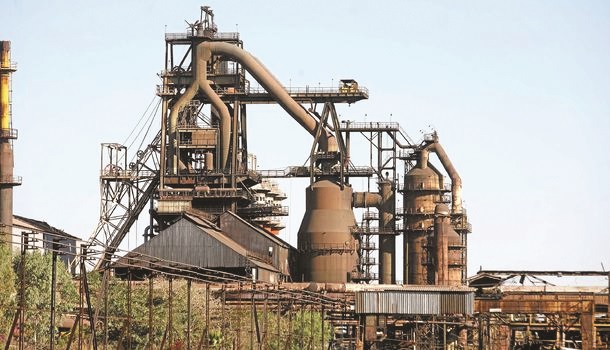
The Sunday News

Harare Bureau
A NETWORK of illegal mining tunnels going as deep as 1,5 kilometres beneath swathes of Kwekwe’s central business district and residential areas are putting residents at risk, as there are fears the areas might potentially cave in, a recent Government study has confirmed.
The study, undertaken by the Zimbabwe National Geospatial and Space Agency (Zingsa), used high-tech geo-spatial mapping techniques that exposed an extensive network of tunnels ranging from 40 metres to around 1,5km in depth, which threatened the structural integrity of the ground and buildings above them.
It highlights the alarming practice of illegal miners targeting pillars supporting the tunnels.
The report also details the hazards the tunnels pose to the city’s infrastructure and environment due to the proliferation of sinkholes and ground vibrations from blasting.
In March last year, a classroom block at Globe and Phoenix Primary School collapsed into a sinkhole, leaving 17 children injured.
Two months later, a building that was being used by several Government departments in Kwekwe was decommissioned because the structure was on top of underground mining tunnels.
Government departments, as well as the district development coordinator and district registrar, among others, were then ordered to vacate the building.
Zingsa is now recommending a nationwide mapping of both formal and illegal mining activities, to prevent further accidents.
“Results of the geo-technical survey indicate that Kwekwe is highly susceptible to mining-related hazards, with a number of tunnels or shafts observed to be traversing the city,” reads the report.
“These shafts provide miners with access to underground resources and are usually secured, ventilated and even provide escape routes in case of emergency.
“From the survey, it was observed that the shafts range from 40m to 1 500m.
“However, there has been limited rehabilitation of some mined-out areas, with some illegal miners exploiting resources in such mines regardless of the safety.
“For instance, illegal miners are mining out pillars left to support the tunnels.”
The survey found clear evidence of subsidence — the downward movement or caving in of the ground surface that happens as a result of underground mining activities — in some areas of Kwekwe.
Subsidence happens after miners extract minerals underground, creating empty spaces or voids.
The rock layers above these voids will no longer be supported and they become unstable.
Over time, these unsupported layers can collapse and settle, causing the ground surface above to sink.
“Furthermore, the survey observed that there are areas that are experiencing incidences of subsidence cracking, with the recent collapse of a house along Silver Oakes Road being a classical example,” it continues.
“Some of the affected areas include Kwekwe central business district up to the western side of the town near the open pit; along and near First Avenue to the north of the road, around Ziscosteel Flats and west of KwaMaiguru area.”
In its recommendations, the report says the Government needs to create a database of all mining activities taking place across the country.
“The open pit area is where artisanal mining is active.
“In these areas, magnetic surveys were done as they had no metal objects such as electric wires, which could influence the magnetic survey results,” the report added.
“The results showed the presence of danger in the form of cracks on infrastructure and underground tunnels and other mining-related activities on selected areas within the city, which are detrimental to Kwekwe citizens and the environment.
“There is need for monitoring of mine-related damage to infrastructure and evidence of sinkholes and cracks using equipment such as pegs, plaster checks, and wire extensometer.”
ZINGSA said there was a need for the development of a spatial database of all mine shafts and mine-related incidences across the country to inform mining operations, especially by artisanal miners.
It also recommended that the inspector of mines in the Ministry of Mines and Mining Development needs to ensure the rehabilitation of mined-out areas.
In an interview with our Harare Bureau, Higher and Tertiary Education, Innovation, Science and Technology Development Minister Professor Amon Murwira said the study will assist the Government in rehabilitating mining areas.
“Government has engaged the ZINGSA to map these areas so that we know where the dangers are, and they have been able to do that,” said Prof Murwira.
“We looked at the Globe and Phoenix School, which collapsed, and we are addressing the issue.
“This exercise has resulted in programmes towards rehabilitation in these affected areas.
“However, rehabilitation can only be done when you understand what is underground, thus ZINGSA has been working on this with other scientific agencies, such as the Geological Survey.
“After the mapping, we, as the Ministry of Higher and Tertiary Education, are now working on rebuilding Globe and Phoenix School using Gweru and Kwekwe Polytechnics and other apprentices.
“What is important is that we have the capabilities to map what is underground and correct what is underground.”
Minister of State for Midlands Provincial Affairs and Devolution Cde Owen Ncube referred questions from our Harare Bureau to the Ministry of Mines and Mining Development.
Ends




